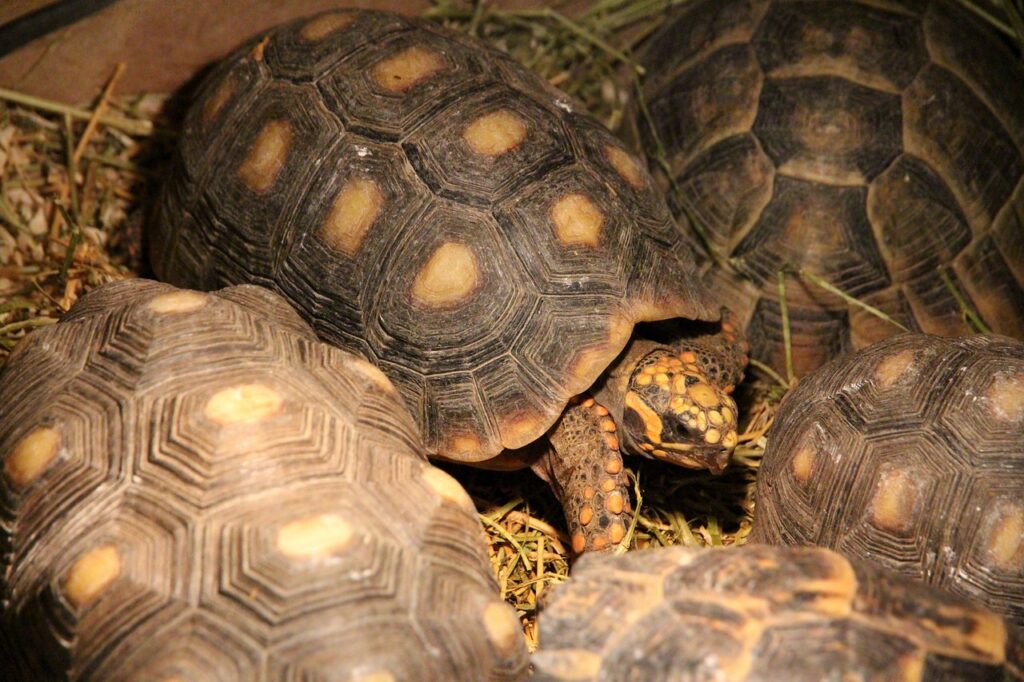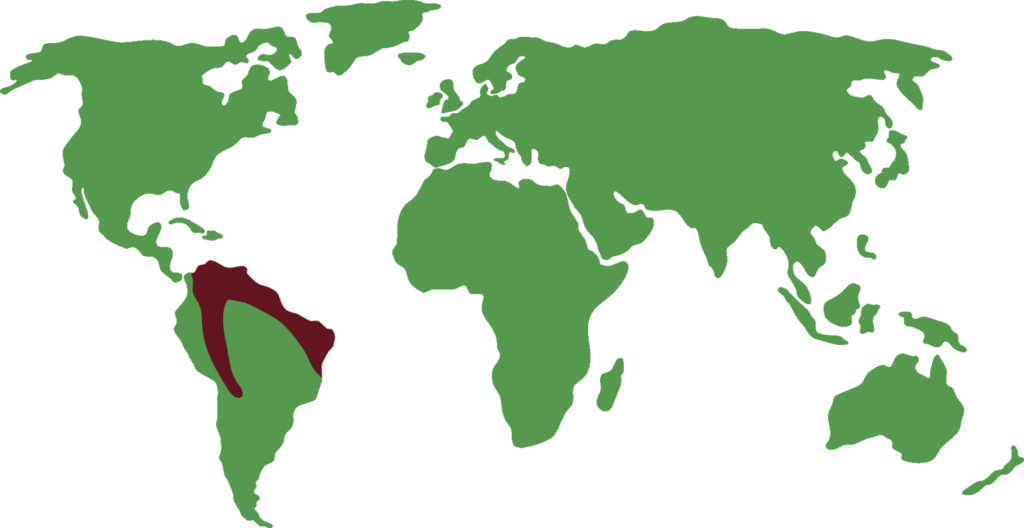RED-FOOTED TORTOISE
Chelonoidis carbonaria

LENGTH

35 cm
WEIGHT

13 kg
LIFESPAN

100 years
The red-footed tortoise is a land tortoise, much smaller than the yellow-footed tortoise.
General characteristics
Although on average they measure between 30 and 35 cm, there are species that can reach up to 40 cm and others that do not even reach 20 cm.
El caparazón es de color negro o pardo oscuro con manchas amarillas-anaranjadas o anaranjadas-rojizas. El plastrón es predominantemente amarillo. En la cabeza y en las patas, especialmente las delanteras, tiene manchas rojas o anaranjadas. El macho es más pequeño que la hembra, sin mencionar que su cola es mucho más grande y su caparazón es más amarillo y hundido en la parte inferior para facilitar el momento del apareamiento.
Feeding
This tortoise is omnivorous, feeding mainly on vegetables and fruit, as well as carrion. They will only eat what they like because they are very selective.
The way to check that a red-footed tortoise has a good diet is if its shell is smooth, whereas if it is not smooth it could be a lack of calcium, which implies a poor diet.
Behaviour
Tortoises usually spend a long time without moving, and red-footed tortoises spend more than 50% of their day inactive. If they eat a lot, they may spend even more time inactive. Some tortoises during the resting period have been attacked by termites that have built tunnels in their shells.
Reproduction
First, the male attracts the female’s attention by striking his shell to demonstrate his toughness. As in many other turtle species, males move their heads to attract the attention of females.
After mating, the female lays the eggs, which usually hatch in September. Incubation lasts two to three months, and they emerge only when they feel completely secure. They reach sexual maturity at 8 years of age.
Threats
This species is in danger of extinction, and its greatest threat is man. Many specimens are sent to South American countries to be sold as food, for example, the typical Venezuelan dish called pastel de morrocoy, which is eaten especially at Easter.
Distribution
It usually inhabits tropical dry forests and bushes in South American countries such as Colombia, Venezuela, Brazil and the Guianas. In Central America it can be found in countries such as Panama and some Caribbean islands. It can even inhabit savannah, including grasslands.

Did you know?
The male is smaller than female.
It is divided into several types depending on the group to which it belongs (northern or southern group).
It is also known as the morrocoy turtle.
Conservation status
